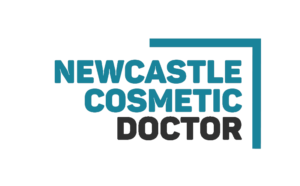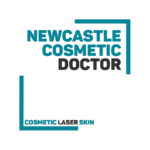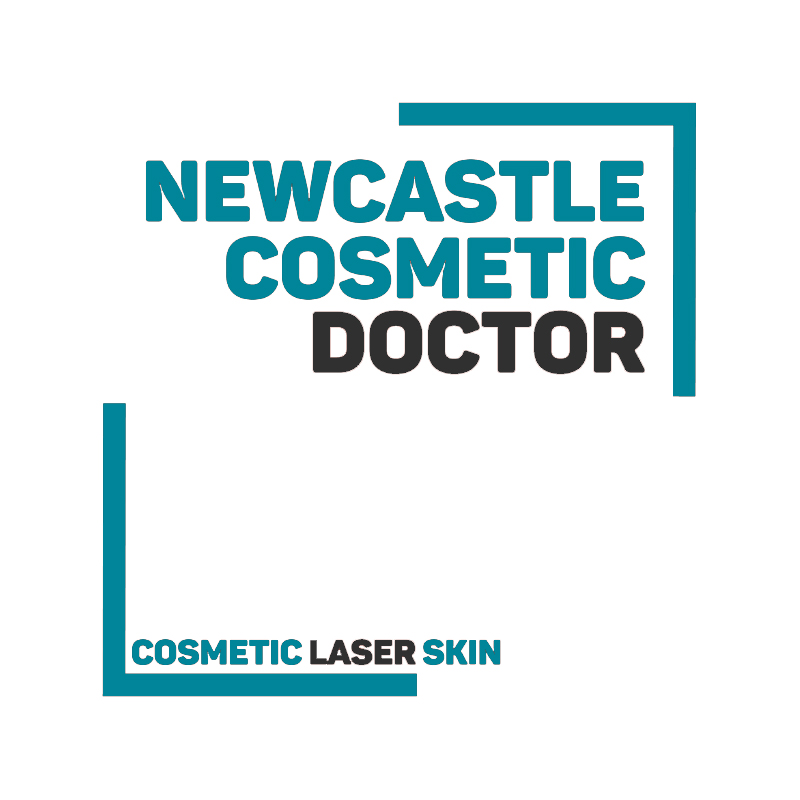Applies to: All NCD clinical staff
1. Purpose
To set out a comprehensive, evidence-based, patient-centred framework for the safe prescribing, dispensing, education, and monitoring of prescription-grade facial medications at Newcastle Cosmetic Doctor. This policy ensures alignment with Australian professional, regulatory, privacy, and medication-safety requirements; promotes informed, autonomous decision-making; and standardises clinical documentation and governance. 1 2 3 4 5
2. Scope & Applicability
This policy applies to all medical practitioners and any delegated staff under direct medical supervision participating in prescription skin treatments at NCD. Covered therapies include topical retinoids (e.g., tretinoin), hydroquinone protocols, azelaic acid, topical antibiotics (e.g., clindamycin), benzoyl peroxide combinations, niacinamide, and medically-directed compounded formulations. It excludes non-prescription retail products and purely cosmetic skincare without a prescription.
Role responsibilities:
- Responsible Medical Practitioner: diagnosis/indication; informed consent; prescription; review and complication management; governance oversight.
- Delegated Clinician/Nurse: screening; education; documentation; adherence checks; escalation of concerns to the prescriber.
- Admin/Dispensing Support: records, privacy/security controls, inventory and batch/lot tracking for compounded items.
All practice activities must adhere to AHPRA/Medical Board expectations, NSQHS Medication Safety, and NSW Poisons/Therapeutic Goods requirements. 1 3 6
3. Definitions & Legislative Framework
- Prescription medicine / Schedule 4 (S4): requires valid prescription by AHPRA-registered medical practitioner; storage/records per NSW Poisons & Therapeutic Goods.
- Compounded medicine: prepared to an individual prescription by a pharmacy operating under Pharmacy Board compounding guidelines; only when a suitable commercial product is unavailable or clinically unsuitable.
- Off-label use: prescribing a medicine for an indication, age group, dose, or route not included in the TGA-approved Product Information; requires risk–benefit justification and informed consent.
- Patient health information: any information about an individual’s health or health services; protected under the Privacy Act and OAIC guidance.
Primary authorities and standards include the Medical Board/AHPRA, TGA, PBS, OAIC, NSW Health Pharmaceutical Services, Pharmacy Board, RACGP, ACSQHC NSQHS, and Therapeutic Guidelines/AMH. 1 7 3 4 5 6 7 8 9 10 11
4. Pre-Consultation Assessment (Protocol)
- Identity verification; demographic details; consent to collect health information (privacy notice provided).
- Medical history: dermatologic diagnoses, atopy, HSV history, medication use (including isotretinoin, steroids), allergies, pregnancy/lactation status.
- Skin exam: Fitzpatrick type; barrier integrity; distribution of acne/pigment/photoaging; concurrent procedures (peels/laser/needling).
- Psychosocial screening: screen for unrealistic expectations, BDD red flags; document goals and function-impact.
- Sun exposure behaviours; occupation; skincare routine; prior responses to actives.
Use the NCD Pre-Consultation Checklist; escalate to the prescriber for contraindications, complex histories, or psychological concern. 1 6 9 12
5. Informed Consent (Procedure)
Consent is a staged process (verbal discussion → written consent → cooling-off confirmation for cosmetic indications where relevant):
- Explain indication, expected benefits, and alternatives (including doing nothing).
- Discuss specific risks: irritation/erythema/peeling; PIH/hypopigmentation risk (especially with hydroquinone/darker skin types); teratogenicity (retinoids); allergic contact dermatitis; antibiotic resistance with prolonged monotherapy; steroid atrophy/dyschromia if included in short-term triple therapies.
- Discuss adherence requirements, sun protection, and avoidance of conflicting procedures during initiation.
- Confirm understanding; provide take-home written instructions; document opportunity for questions and right to withdraw.
Store signed consent within the health record; manage any photos and identifiers per OAIC health-privacy guidance; ensure advertising compliance (no testimonials; accurate claims). 1 2 6
6. Prescribing & Dispensing Protocol
- Diagnosis/indication documented; consider pregnancy/testing where clinically indicated (retinoids contraindicated).
- Prescriptions specify drug, strength, vehicle, quantity, dosing/titration, duration, repeats; include “facial application” site.
- Compounded items: use Pharmacy Board-compliant partner; record batch/lot and beyond-use date; reserve compounding for clinical need.
- Electronic prescribing/records preferred; enable audit trail; maintain secure storage/access controls (role-based).
- Provide written patient instructions (see Section 7) and dispense education; confirm teach-back understanding.
Follow TGA prescribing guidance, PBS considerations, NSQHS Medication Safety Standard, and RACGP safe prescribing principles. 3 4 5 9
7. Treatment Instructions & Patient Education
- “Use a pea-sized amount for the whole face at night, avoiding eyes, nostrils and lips. Start every second night for 1–2 weeks, then increase to nightly as comfortable.”
- “Expect mild redness or peeling; this is common in the first 2–4 weeks and settles as your skin adapts.”
- “Apply a gentle moisturiser and SPF 50+ every morning. Avoid waxing/peels/laser unless your doctor clears it.”
- “If you experience severe burning, swelling, blisters, or pus, stop and contact us immediately.”
Technique & quantities: cleanse → pat dry (wait 10–15 minutes) → apply small, even amount → moisturiser if needed. Storage: room temperature, capped; discard after beyond-use date for compounded items.
Provide printed Aftercare Sheet; reinforce photoprotection and barrier repair during initiation (“retinisation”). 10 11 12
8. Expected Response, Timeframes & Review Criteria
- Retinoids: irritation peaks weeks 1–3; visible improvement 6–12 weeks; maximal effects 3–6 months.
- Hydroquinone: progressive lightening; review 8–12 weeks; avoid continuous long-term use; consider pulse/maintenance strategies.
- Azelaic acid: well-tolerated; benefits for dyspigmentation/inflammatory lesions 8–12 weeks.
- Topical antibiotics: short-term + benzoyl peroxide; reassess 6–8 weeks.
Document objective change (photos, lesion counts or validated acne scores when relevant); adjust regimen by tolerance and outcome. 10 12 13 14
9. Contraindications & Risk Stratification
Absolute:
- Pregnancy or planning pregnancy (retinoids contraindicated).
- Known allergy to active ingredients or excipients.
Relative (require modification / monitoring):
- Barrier impairment / active dermatitis; post-procedure skin (laser / peel / needling) within 1–2 weeks.
- Highly photosensitive occupations / environments (strict SPF & timing strategies).
- Darker skin types with PIH tendency (start lower; add brightening / barrier-support plan).
Document risk–benefit reasoning, mitigation steps, and patient agreement in the record. 1 10 12 13
10. Adverse Events & Red Flags (Escalation Algorithm)
Recognition → Immediate Action → Medical Review → Documentation / Audit → TGA reporting if required
- Severe burning / blistering / swelling → stop medication; cool compress; medical review 24–48 h; consider topical steroid per prescriber; swab if infection suspected.
- Persistent erythema >72 h, pustules, exudate → assess for infection or ACD; cease offending agents; treat per guidelines; schedule follow-up.
- PIH / hypopigmentation → pause / modify actives; strict photoprotection; introduce depigmenting support if indicated; review in 4–8 weeks.
- Suspected pregnancy on retinoid → cease immediately; discuss risks; notify GP / specialist.
Document severity, management, and patient communication. Consider reporting significant medicine-related issues per TGA guidance. 3 4 10 12
11. Follow-Up & Review Schedule
- Week 2 (tele / brief): tolerance, irritation, adherence; adjust frequency or add moisturiser sandwiching.
- Week 6: clinical response vs goals; photos; titration or agent swap if needed.
- 3 months: outcome review; maintenance vs escalation; assess adverse events.
- Ongoing: 3–6 monthly while on prescription care; sooner for higher-risk regimens (e.g., hydroquinone pulses).
All visits to include safety check, counselling reinforcement, and photo documentation with consent. 1 3 10
12. Aftercare, Maintenance & Transition
- Barrier-support routine during initiation: gentle cleanser, bland moisturiser, SPF 50+ daily.
- Taper to maintenance strengths/schedules once stable results achieved; consider alternating nights or weekend-only regimens.
- Transition off hydroquinone after targeted phase; switch to non-hydroquinone brighteners (azelaic acid, niacinamide) for maintenance.
Provide patient self-monitoring checklist and clear instructions for contacting the clinic for red flags or unexpected reactions. 10 12 13
13. Documentation, Privacy & Record Retention
- Retain prescription, consent, dispensing records, and photographs securely for ≥ 7 years.
- Role-based access control for electronic records; audit trails enabled; secure destruction at end of retention.
- De-identified images only for education / marketing with separate explicit consent; no testimonials per AHPRA rules.
Adhere to OAIC privacy principles, AHPRA/Medical Board expectations, and NSW Poisons & Therapeutic Goods requirements. 1 2 6 7
Sources
- Medical Board of Australia. Guidelines for practitioners who perform cosmetic medical and surgical procedures (2025). https://www.medicalboard.gov.au/ ↩︎
- AHPRA. Advertising a regulated health service – Guidelines. https://www.ahpra.gov.au/Resources/Advertising-hub/Advertising-guidelines-and-other-guidance/Advertising-guidelines.aspx ↩︎
- ACSQHC. NSQHS Standards – Medication Safety Standard. https://www.safetyandquality.gov.au/standards/nsqhs-standards/medication-safety-standard ↩︎
- TGA. Prescribing medicines – Guidance for health practitioners. https://www.tga.gov.au/ ↩︎
- PBS. Schedule of Pharmaceutical Benefits. https://www.pbs.gov.au/ ↩︎
- OAIC. Guide to health privacy for health service providers. https://www.oaic.gov.au/privacy/ ↩︎
- NSW Health. Poisons and Therapeutic Goods Regulation – Pharmaceutical Services. https://www.health.nsw.gov.au/pharmaceutical/Pages/default.aspx ↩︎
- Pharmacy Board of Australia. Guidelines on compounding of medicines. https://www.pharmacyboard.gov.au/ ↩︎
- RACGP. Safe prescribing and quality use of medicines. https://www.racgp.org.au/ ↩︎
- Therapeutic Guidelines. Dermatology (latest online). https://tgldcdp.tg.org.au/ ↩︎
- Australian Medicines Handbook (AMH). https://amhonline-amh-net-au/ ↩︎
- NHMRC. General clinical guidance & methodology. https://www.nhmrc.gov.au/ ↩︎
- Australasian College of Dermatologists. Clinical resources. https://www.dermcoll.edu.au/ ↩︎
- JAAD / International dermatology literature on topical retinoids & hydroquinone adverse effects. https://www.jaad.org/ ↩︎


